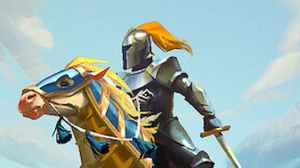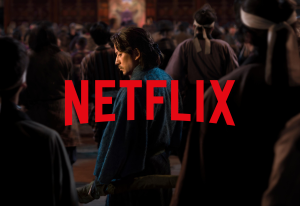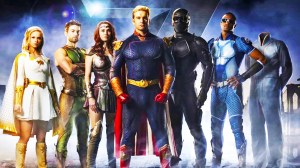Licensed games are not where they used to be. It was extremely rare to get a decent one and nearly impossible to get a great one with no caveat attached. Batman: Arkham Asylum wasn’t the first great licensed game, but it did seem to mark a shift that has more or less continued to this day with games like Marvel’s Spider-Man and the Star Wars: Jedi series. The Teenage Mutant Ninja Turtles, however, still aren’t usually the stars of great video games. TMNT: Shredder’s Revenge is the outlier in this more modern era because most TMNT games have been either locked to mobile or range from average to bad. TMNT: Splintered Fate is not another mindless brawler for non-picky kids, though, as this newly ported Hades-like title is better than it should be.
Videos by ComicBook.com
The Hades comparisons are undeniable, and not something the developers hide from. Lead game designer Daniel Stansens welcomed them and said he was “flattered” to be compared to Supergiant’s sacred classic. Stansens’ ambitions of having players point out aspects that Splintered Fate does differently are a little off-base since it, even at its best, doesn’t have the sauce that Hades does, but being able to just be in the same hemisphere as Hades is a feat.

RELATED: Next Teenage Mutant Ninja Turtles Movie Suffers a Big Delay
Splintered Fate is able to occupy that space because of its solid controls and varied upgrade paths. Dodging and attacking are responsive, and enemies are shockingly relentless, meaning mindlessly slashing without dashing is a recipe for a quick death. Bosses carry on this mentality and have a handful of different attacks that ensure players can’t sit back. It sadly doesn’t have any tactical mechanics like Hades’ backstab and environmental kills, and it could sorely use more random events — constant lightning storms just don’t cut it — but the aggressive waves force players to engage and, thus, create a strong foundation.
Despite it not having quite the depth it should in some areas, its approach to upgrades makes up enough ground. Buffs have all sorts of varied effects and can interact with each other, allowing players to make their own build. For example, there’s an upgrade that can shoot shurikens out of each attack and it pairs nicely with the boon that lowers an enemy’s defense if they get hit by a shuriken. There are even rare upgrades like Hades’ duo boons that have a special effect once two different buffs are chosen. Synergies like this are the lifeblood of roguelites, so it’s yet another way Splintered Fate nails the fundamentals.
It doesn’t nail every fundamental, though. The permanent purchasable upgrades are doled out well, but the game puts up some soft barriers that can artificially stunt progress. It’s almost impossible to buy enough of the different damage-boosting upgrades in the beginning and this unnecessarily drags out later battles if players get too far too quickly. Dialogue also repeats rather often, and the mystery central to the game’s story just isn’t compelling and is poorly drip-fed to the player after each successful run.

Still, these are small gripes that don’t ruin either system. Some of the lines are surprisingly funny, and, after some early growing pains, the long tail of upgrades leads to a rewarding power curve that grows with the player as they get better at the game. It doesn’t have a ton of random events, but players can switch up runs by making them harder in different ways through risky yet rewarding Pact of Punishment-like debuffs, and the four Turtles and Casey Jones all have unique attributes. It’s just nearly impossible not to compare it to Hades and how it created such a titanic mushroom cloud in its wake that makes it hard for anything else to compete. It’s like Dark Souls in that sense; the title that popularized that specific type of game stands almost too tall to the point where those that followed, in many respects, still couldn’t surpass it.
It seems like a lot of this praise comes from how the low bar is for a kid-friendly franchise like this. And that’s true in a sense in a way that is hard to shake. From a casual glance at its cartoonish art style, Splintered Fate doesn’t seem like it would be much more than gristle for children, a perception that isn’t helped by it launching first on iOS platforms to little overall fanfare. It absolutely did not have to be great. Many TMNT games have not been and have not aspired to be much more than the bare minimum, if that. Not even PlatinumGames — a studio known for beloved action games like Bayonetta, Vanquish, and Nier: Automata — could crack that shell with its 2016 stinker TMNT: Mutants in Manhattan, which was pulled from digital stores barely seven months after it launched.
The Turtles still haven’t gotten their Arkham Asylum — maybe the God of War-like The Last Ronin has a shot (if the studio exists long enough to finish it). But a big-budget Game of the Year candidate may not be as important for TMNT’s video game prospects if more teams do what developer Super Evil Megacorp did with TMNT: Splintered Fate: make an unexpectedly respectable game in an unexpected genre. The reptilian mutants are flexible enough to fit in a whole swath of genres, so finding an appropriate type of game for them and hitting all the right essentials is an admirable strategy. Zagreus is still the king (or prince, technically) in the roguelite genre, but even being positively mentioned in the same breath as Hades is an endorsement and a strong sign that Splintered Fate’s approach might be just what the franchise needs in the video game space.








